Opinion: Which MTB Innovations Do We Actually Need?
Innovation is a tricky business. Many of the technologies that have made mountain biking as good as it is today (suspension, dropper posts, disc brakes...) were once considered unnecessary and over-complicated by some. But on the other hand, if you look back at a magazine from a few years ago you'll see no shortage of "game-changing" innovations that never amounted to much.
To name a few, how about linkage forks, one-piece wheels, pull shocks, multiple shocks, or the Specialized's WU dropper posts that adjusted the saddle tilt as it dropped... Some of these were good ideas in many ways, but the fact they failed to take off suggests they weren't as much of a gamechanger as their inventors hoped, or perhaps were too complicated to be worth the effort.
Looking back in time, it seems easy to sort the revolutionary innovations from the duds. But hindsight is 20/20. Spotting what's going to move the sport along in future (and what's not) is much trickier.
So which of the current crop of tech trends are worth having? I'm going to play the role of the bad guy in Gladiator and sort those that deserve to live from those we could probably live without.
Bear in mind, this is just my current opinion and I'm both willing and likely to change my mind about some of these ideas. It isn't meant to rain on anyone's parade and I certainly don't want to discourage innovation; it's just a finger-in-the-wind take on which ideas I think we're likely to see more of in future. Who knows? Looking back on this list in ten years' time I might have got it all wrong.

To recap, a four-bar linkage is one where the rear axle is mounted on a frame member which is not directly connected to the mainframe, but moves on two other links - these could be a pair of short links (like VPP) or a rocker link and a chainstay (Horst-link). That makes four frame members: the mainframe, lower link/chainstay, rear triangle/seatstay, and upper link.
A six-bar linkage adds two more frame members and three or four more pivot points. This adds weight and cost, along with more parts to service. I haven't seen a satisfyingly specific justification from any six-bar proponents, but the claimed advantage usually has to do with fine-tuning the axle path and therefore the anti-squat curve in a way that isn't possible with a four-bar design. But whether that makes the bike ride appreciably better is highly questionable. After all, there's little agreement on what any of these curves should ideally look like anyway.
What's more, according to Pinkbike's kinematics expert, Dan Roberts, some of these designs are extremely sensitive to pivot placement, to the point where manufacturing tolerances could (potentially) create a meaningful change in those highly-refined kinematics.

Like many people, there was a time when I had just about convinced myself a 125mm dropper was all you needed. Sure, the saddle got in the way sometimes (actually quite often) but that probably just meant I wasn't hanging far enough off the back of the bike, right? Then every time I tried a longer post - first 150mm, then 175mm, then 200mm and more - it felt great to have a bit more room to move around and allow the bike to come towards me when pumping. When I returned to a shorter seatpost, the saddle always seemed to be in the way more often than I noticed before.
Some people blame steep seat tubes for the need for more drop, but I think the move to longer front-centre lengths is a better explanation because you can't hang your weight behind an over-extended saddle if you want the front wheel to grip. Really though, long-travel droppers were always a great idea - judging by the wear marks on the last fixed seatpost I ever owned, I was dropping it by about 200 mm by preference. It just took time to make a reliable dropper that long.

When it comes to regular internal cable routing, most manufacturers have managed to eliminate the rattle and make it relatively easy to change a cable. But recently Magura launched a concept for a brake with cables running through the handlebar, then Focus launched several new bikes with cables running through the headset, spacers and the stem.
I hardly need to tell you the drawbacks of this. Swapping a cable means taking the stem apart and changing stem length involves taking the brake apart and re-bleeding it. Even dropping the bar height requires a different (round) spacer above the stem, which means different parts and a less-than-clean look, which sort of destroys the point. Having a few cables crossing in front of the frame is fine.

Inserts aren't for everyone. Regular tires offer enough protection for most people and if you're worried about pinch punctures or rim damage you could just increase pressures slightly. But if you're after the best possible grip, they have real benefits. Not only do they add some protection for your tires and rims, allowing lower pressures, they also increase the damping of the tire, making it less bouncy, more stuck to the ground.
You could achieve much of this with a thicker-casing tire, and doing so might have a similar weight penalty to adding an insert. But here's the thing: thicker tire casings dramatically increase rolling resistance, which has a much bigger effect on rolling or climbing speed than the extra weight does. But with an insert, you can have the protection and damping benefits without the slower rolling speeds.

I'm sure this will be controversial. I get that high pivot bikes have advantages - they're better at absorbing large bumps and have better sensitivity while pedalling. If you're looking to get down a World Cup track as fast as possible, they make a lot of sense. But even then, it's not as if low-pivot bikes aren't still winning races and when Neko Mullaly tested comparable high and low-pivot bikes in a really impressive batch of back-to-back testing, there wasn't much in it. It even sounded like he was leaning towards the low pivot bike.
I'm not saying high pivot bikes aren't better for descending (for a given amount of travel, I think they are); I just don't think the benefit is worth it for anything other than a downhill race bike. Manuals and bunnyhops are slightly harder work, the idler adds a measurable amount of drag, it adds weight and complexity, plus you'll usually need a longer-than-stock chain and a lower roller guide to keep the chain growth in check.
Are these downsides the end of the world? Absolutely not. But the upsides aren't going to change your life either, so I'm not convinced it's worth it for a bike you pedal under your own steam. If you've already got 200mm+ of suspension travel then fair enough, but otherwise it might be simpler, more efficient and more effective to just increase the travel in order to improve big-hit absorption.

While coil springs have the same stiffness throughout the travel, traditional air springs are much stiffer at the start of the travel than in the middle, which can make them feel harsh, unpredictable and unstable. But by increasing the volume in the positive and negative air chambers, it's possible to reduce this mid-travel dip in stiffness, making them perform more like coil springs, with the associated traction and support.
When companies advertise this "coil-like feel", people often ask "Why not just use coil springs"? Well, they're heavier, usually aren't progressive at the end of the travel, and most of all, changing the spring rate is incremental, expensive and time-consuming. And from a brand's perspective, getting all their customers set up with the right spring rates is a logistical headache. That's why air will continue to be the default option, especially as air springs continue to improve.

Last year saw the release of RockShox Flight Attendant. Though not the first, it's the latest and greatest automatic suspension mode selector yet. It improved on Fox Live Valve and Lapierre's ei system by making it wireless, pedal sensitive, and offering an intermediate compression damping mode as well as open and closed.
The idea, of course, is to allow you to have a firm and efficient bike when climbing, a supple bike for descending, and something in-between when you're pedalling through rough terrain. And according to Kazimer's review, it basically does what it sets out to do.
But even the original Fox Live Valve worked exactly as intended most of the time. My issue with automatic lockouts in general is that, with modern bikes, having the suspension locked out is only a minor benefit unless you're out of the saddle sprinting - less than 1% faster according to this test. And for the longer climbs where that kind of percentage could add up to a few seconds, what's wrong with using the lockout manually?
Don't get me wrong, the technology is impressive. But given the marginal benefits (especially when compared to a cheap remote lockout), I struggle to see the appeal unless the price, weight and charging requirements come down considerably.

I realise the comments section is full of world-class athletes who can ride a singlespeed all day long up 25% inclines. Many of you might think that a 52-tooth bottom gear is totally unnecessary, but science says otherwise.
Let's imagine you're a 70 kg rider with a 15 kg bike and you want to ride up a 20% gradient (which is steep but not unheard of). Let's say you can sustain 360 W of power, which at that bodyweight is about the level of a male domestic pro cyclist. On a 20% gradient in ideal conditions, you could sustain a pace of 7 kph.
When working hard, most cyclists like to pedal with a cadence of about 90 RPM. With a 32-tooth chainring and a 29" wheel, you'd need at least a 56-tooth sprocket to achieve that cadence at 7 kph.
The point is, even very fit cyclists can benefit from large sprockets if the gradients are steep. It's not that riding hills that steep is impossible with a smaller cassette - I used to run an 11-36t cassette and got up (almost) all the same hills I do now - it's just that you'll have to use a less efficient cadence which is more tiring and harder on your body. Besides, gears shouldn't be designed for the fittest riders in optimum conditions, but to accommodate most riders in most conditions. If you think a 52-tooth sprocket is unnecessary, you're either not riding very steep climbs or you're putting up with a less than ideal cadence.
What do you think? Let us know in the comments.
Which of these technologies will be commonplace in ten years time?
Tick all that apply
Author Info:
Must Read This Week
Sign Up for the Pinkbike Newsletter - All the Biggest, Most Interesting Stories in your Inbox
PB Newsletter Signup
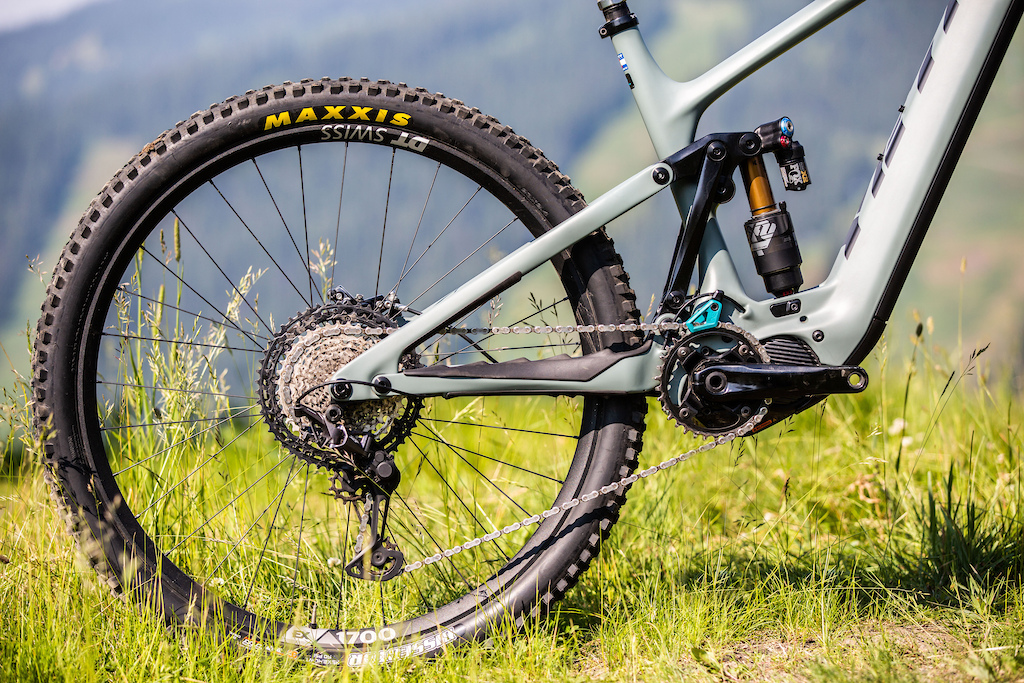
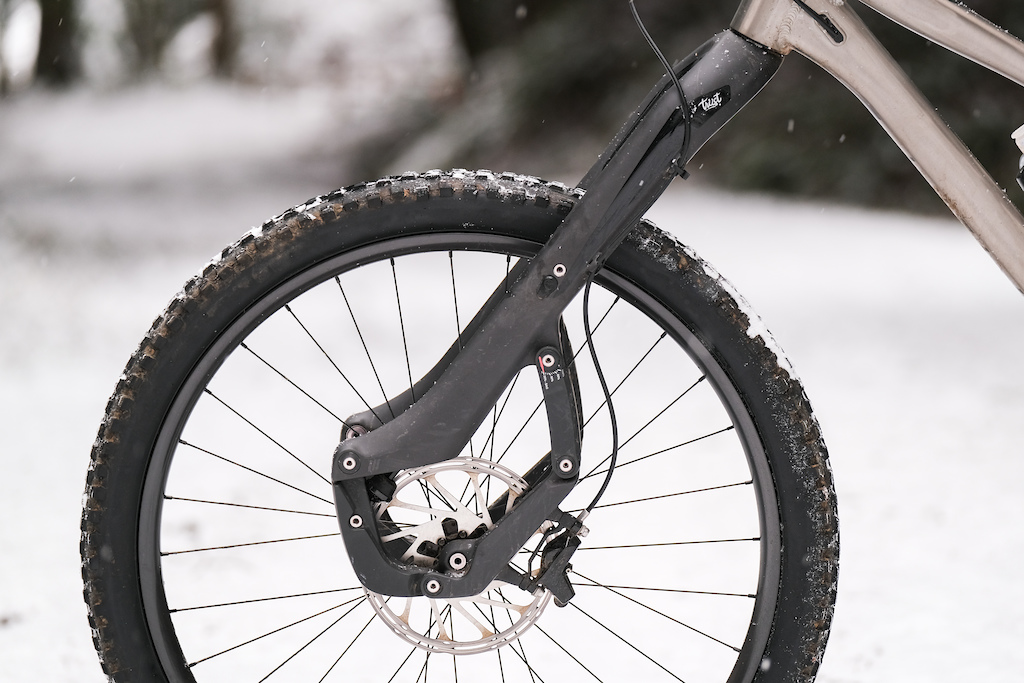
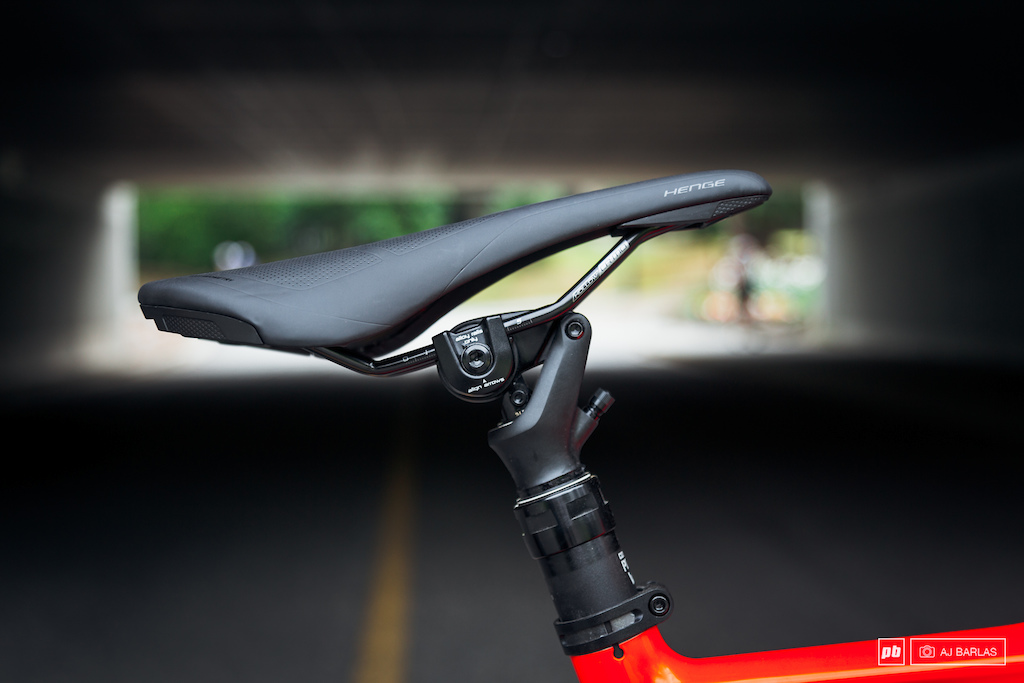



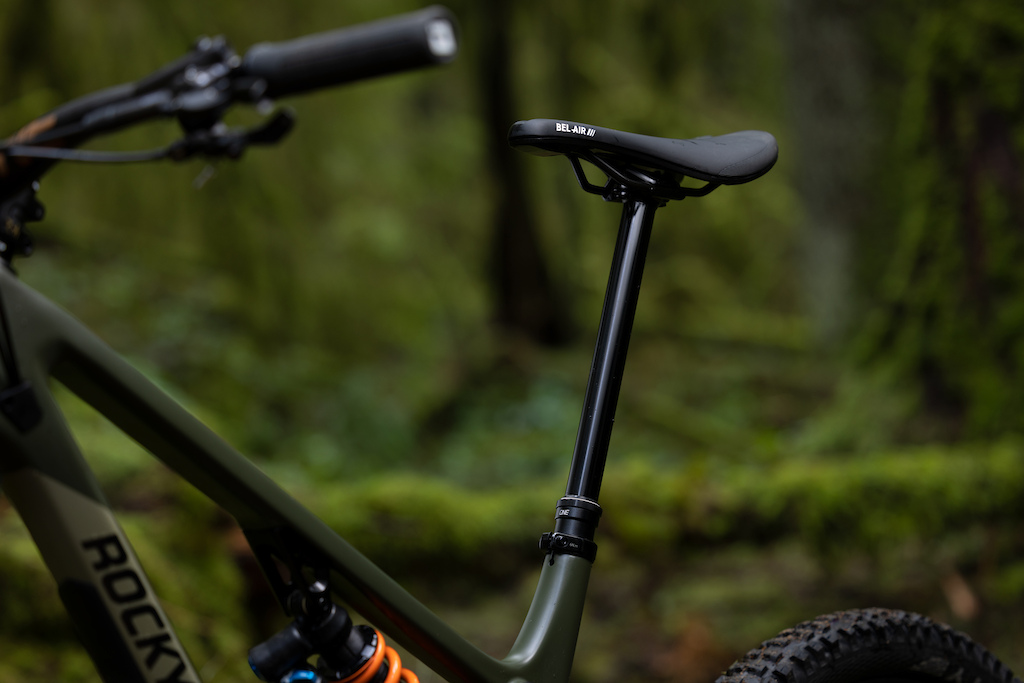
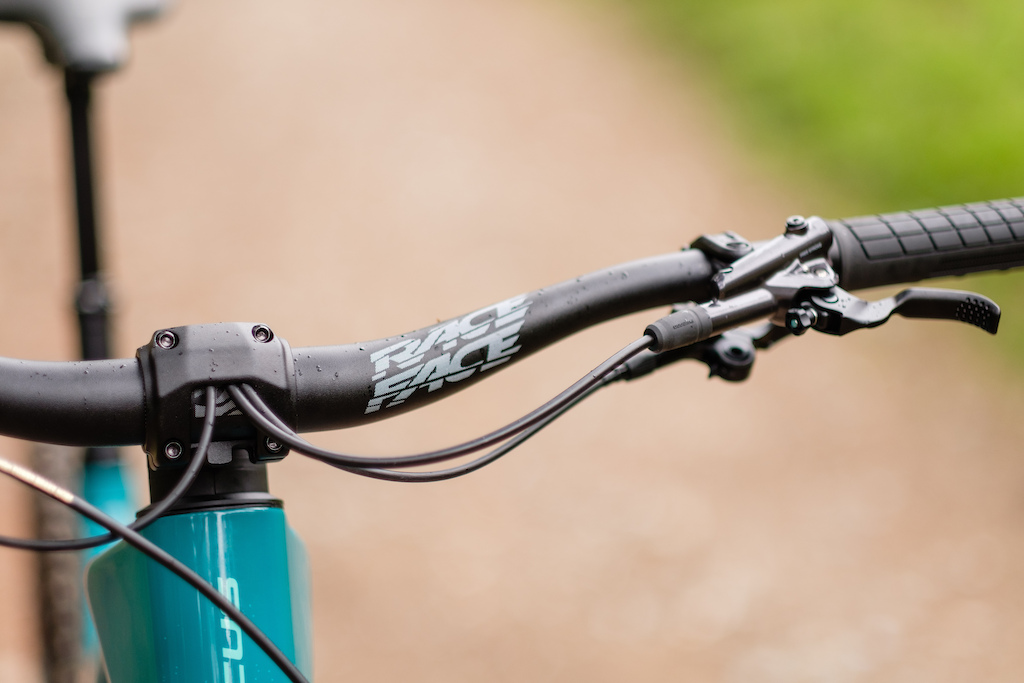
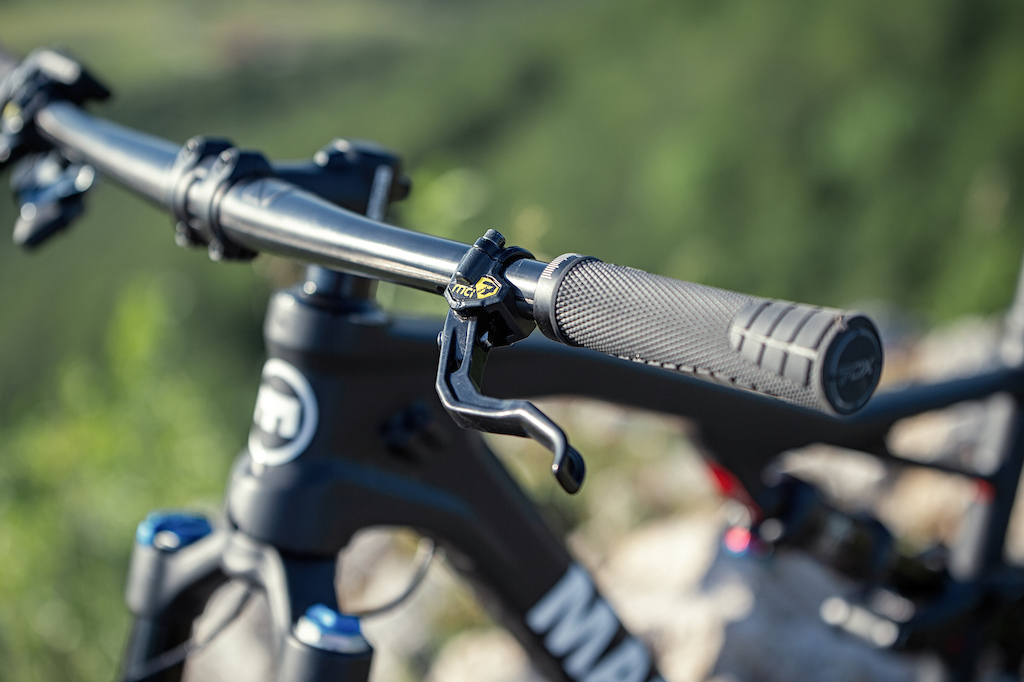

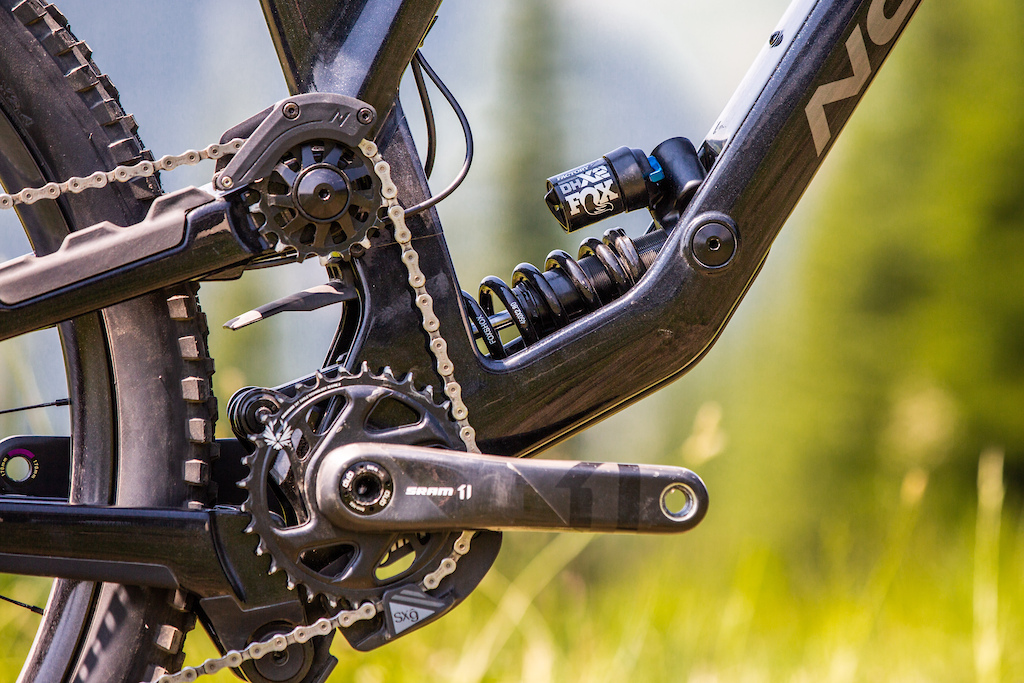
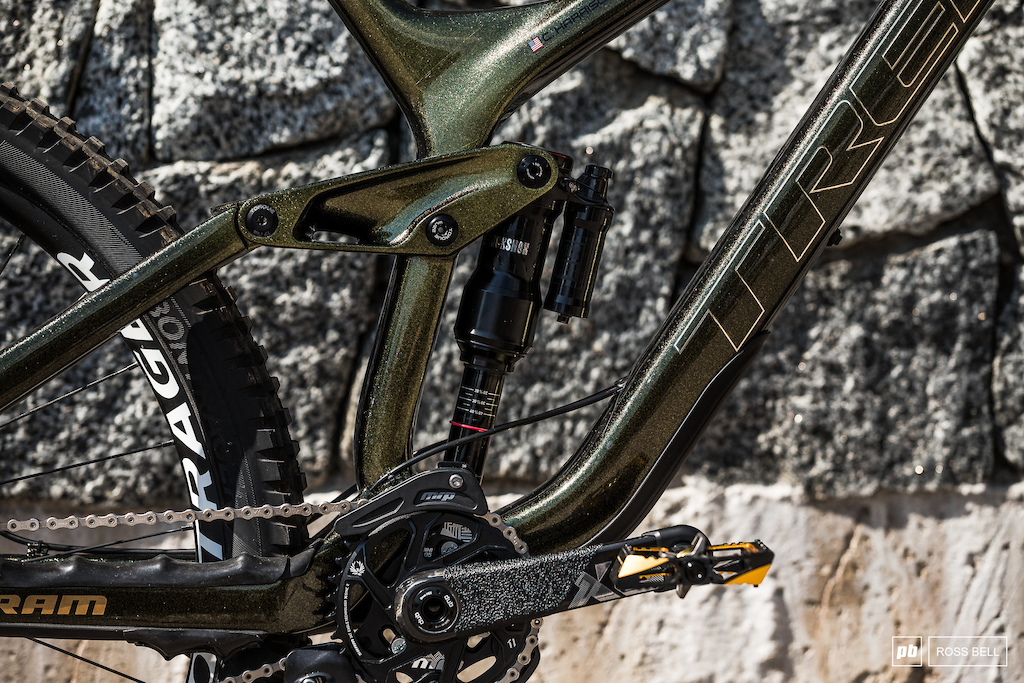

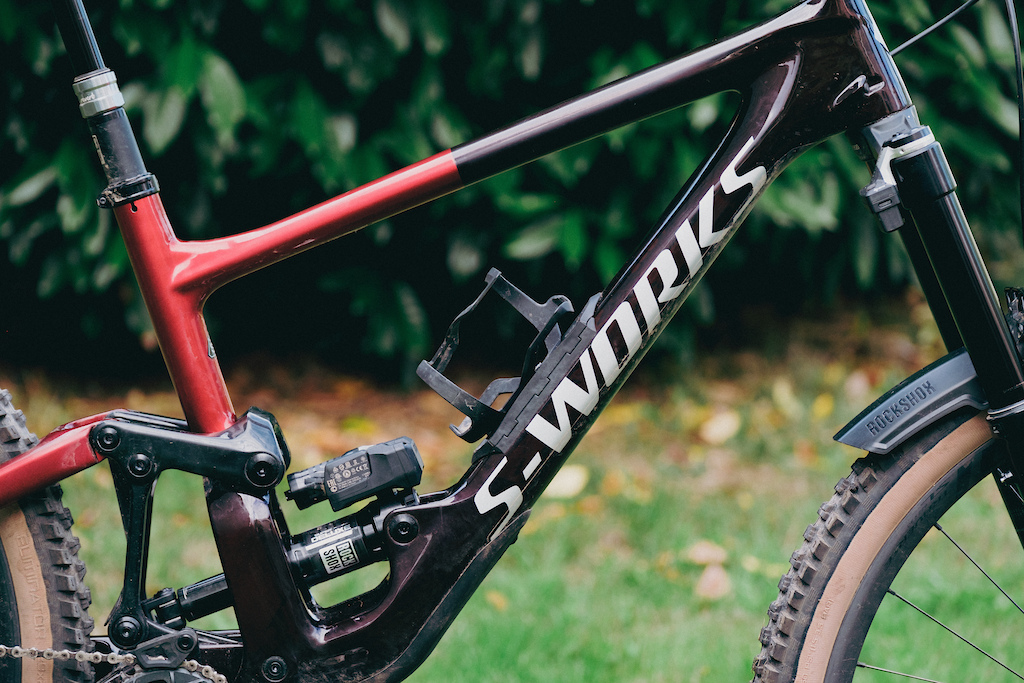
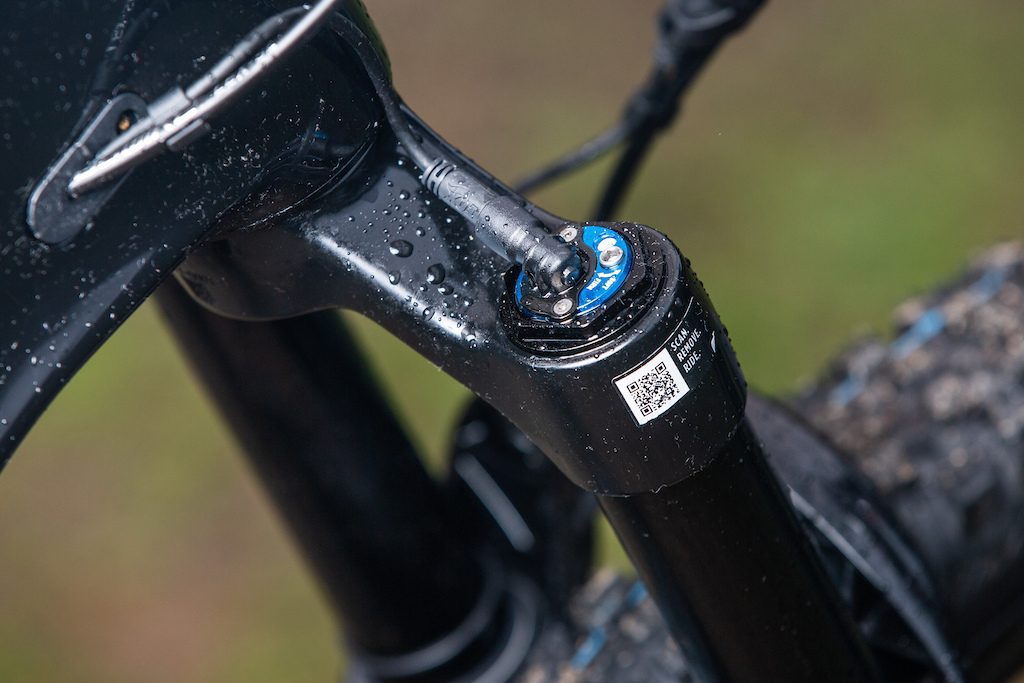
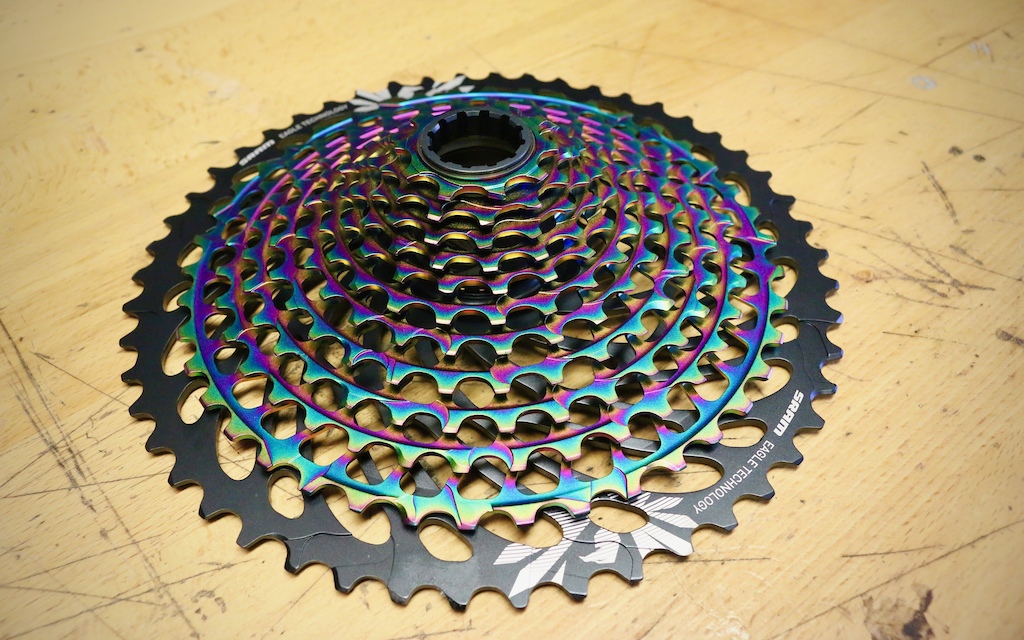


veloaficionado.com/blog/american-star-bicycle-will-robertson-pedals-down-the-steps-of-the-united-states-capitol-in-1885
The fun for me has always been in learning something new and taking some risks, others find joy in the fitness aspect.
I dont have any tolerance left for the types that spend their whole ride w@nking off over tech stats, geometry, suspension and who cares what else, those types cant ever be happy with the bike they have and blame everything on the equipment, when in reality they have forgotten to actually try and progress and improve their skill.
(I actually like the Twinloc and don't care one bit about having a few more cables)
When I let off the brakes I didn't go anywhere and I was very confused. The guy behind me had to tell me what was going on.
And then someone could appreciate the characteristics of the larger negative air chamber over the aforementioned advancements, right? One may not necessarily "need" it but if your going to get a suspension unit anyway, it doesn't hurt if it performs a bit better for your needs.
Agreed. Remember when we all clutched our pearls when bikes first dipped into the 6k range? Now, with Bikes exceeding 10-12k, are 6k rigs now considered mid level? I have a basic understanding of economics, price /demand, cost of R n D and tech advancement in our sport, as well as the current supply/chain struggles (which I hope subside in the near future.) Yet, I still suffer from a severe case of "Hi Brow" as we see the term "FINANCING AVAILABLE" regularly on bike adds.
Nevertheless, cheers everyone and no matter what you ride and no matter what you spent on it, remember, it's Friday and let's go ride them damn bikes and get your $$ worth out of em!
If we look at a $4K bike - which isn't cheap, but it's attainable to many people - a B-to-C brand can offer a hell of a good bike with an aluminum frame, Deore components, and top-level dampers. A $19,999 S-Works Founder's Edition may exist, but you don't have to buy it. As @Mntneer said, let someone else fund the R&D and you'll get most of the benefits a couple years later at a fraction of the price.
There are definitely brands like you said, offering a solid build for 3-4k, but there are an equal, if not higher amount brands also just downright yanking money out of peoples pockets for an awful value bike.
This opens a broader discussion of the bike sales model. My feeling is the traditional model of retailers with a large footprint and large inventory will fade away. I feel shops can become smaller and serve as display and demo centres - plus service & repair as usual, of course - and new bikes can be ordered directly from the manufacturer. Any sale facilitated by a shop would generate a substantial commission and the customer can choose whether to receive the bike in a box or pay the shop for varying levels of assembly, custom fit, etc. A hybrid B-to-C model would reduce capital and overhead for the shop and would reduce the gap between B-to-B and B-to-C pricing.
Well said. Particularly the me being old part... Cheers
The costly overheads of a large shop and the uneven cash flow of an annual purchasing cycle are difficult for bike shops. Both can be eliminated. As you said, a few large, traditional shops may persist, but it's inevitable for more efficient business models to take over. We've already reached a point where I can buy a small component or complete bike online and have it arrive 24 - 48 hours later for less than buying it in a shop. Service and repair can't be delivered in a box on my doorstep, an online bike fit and set-up will never be perfect, and I can't experience the way the bike rides via a couple mouse clicks. Shops need to focus on the things that can only be done in person, and they need to stop wasting their - and our - money on things other vendors can do for less.
To take things a step further, component companies should also consider selling B-to-C. For example, The Hayes Group (Hayes, Manitou, ProTaper, Sun-Ringlé, Reynolds, etc.) has only a tiny market share - especially OE - despite making great products. I'll bet more people would be buying Dominions or Mezzers if the prices dropped by half.
And not many shops can make it on labor and tire levers alone, so that’s not feasible. Maybe if you’re in a resort-ish town or larger city but that’s about it.
On the other hand you're totally correct in how bike manufacturers are treating their local dealers. My shop (which is very reputable and popular in our tri-state area) was forced to pay cash in advance for this year's bike order almost eliminating his company savings just to have bikes on the floor in the shop, whenever the end up showing up.
@emptybe-er: Most shops I've spoken to make more on service than sales. I suspect margins could increase if they cut their staff and floor space to a fraction of the size currently required and still made money from commissions on bikes that didn't have to occupy floor space. Please let me know if you're a shop owner or manager and that doesn't line up with your experience, though.
Some wiggle in diameter aside, we're all basically on the same tire and rim geometries we've known as cyclists for decades. Hookless is an interesting change. Tubeless really isn't that different, and you can run most 'non tubeless' tires tubeless with a little creativity and a lot of sealant. Width comes and goes. Casing plies and layups come and go.. in cross section, they're all pretty similar from a distance, and just about everything is still interoperable.
That said... MTBs are not Goldwings. Yet.
@mtmc99: Wouldn't have to be anything proprietary or exotic. In the last few years, we're starting to see more advanced casings with increased support near the bead that improve lateral stability and create a progressive casing spring rate. We just need to continue down that path a little further.
Tire and rim manufacturers need to develop those components to work explicitly with inserts to keep the benefits but trim some weight.
found the explanation I was looking for. It's more apparent in the rear suspension.
None of what you said here is true.
In slippery conditions lower pressures will always help. The low pressure grip is why you see trials moto running full moose inserts and basically no air. I see it fairly regularly in the PNW with people who I would normally expect needing pressures in 22/24psi range without any inserts riding pressures more like 18/19psi in the winter with inserts for grip.
A tire is much more than compressed air. The rubber and carcass add a decent amount of rebound damping. That's why heavier casing tires tend to have more rolling resistance.
Maybe there is a solution out there but I'm not sure sidewall tech is it.
Some of the hesitation is due to the unsprung mass of the wheel and related components, but I maintain much of the problem is due to stick-slip behaviour of the front wheel. The rear wheel has a lot more unsprung mass, while the front has all the friction (when subjected to a bending load). Both wheels have factors that lead to the observed uneven movement. The unsprung mass of the rear is difficult to avoid, but the friction of a telescoping fork can be almost entirely eliminated.
@keeqan: A valid concern, but we're already seeing more advanced casings with zero to modest cost increases. Examples:
• Onza used a super thick butyl sidewall on some now-discontinued models. I didn't like how it rode - especially in cold weather - but it dramatically changed the ride and didn't change the cost.
• Maxxis has been using a small butyl strip near the bead of their DH tires for decades, and Vittoria for not quite as long.
• IRC has been using stiff foam or rubber near the bead for years.
• Schwalbe and Michelin are doing a great job of stacking support strips of varying heights near the bead. Adds only a few dollars to the price over their simpler casings.
• "Apex" stiffening layers from the bead to halfway up the sidewall are common on medium- to heavy-duty casings. Similar price bump to Schwalbe and Michelin.
• Many urban and touring tires use a thick layer of low hysteresis foam under the tread for puncture resistance with modest impact on price. It's not light, but the rolling resistance can be excellent; maybe something similar could be used on sidewalls.
The option will always exist to run an insert with a traditional casing on a narrow rim, but do you not want to have more sophisticated casings with progressive sidewall stiffness and a rim width that better supports the tire?
Similarly, you can still run a tube-type tire that allows you to choose your tube material and thickness, but the benefits of integration sometimes outweigh the limitations.
Dude, you are not gonna win. Go ride your bike
Are they though? The R1250R and RS don’t have them any longer, but I suspect that’s mostly due to cost. The GS and RT both still have them (and I can’t see that changing). It’s a telelever, so not quite the same, but still a linkage. The K1600 still has the duolever (Hossack) front linkage.
Like you I’d love to see a commercially viable linkage fork. Could be a very effective solution on the bigger, more powerful e-bikes where the increased weight is negated by the motor.
@mdinger: Unfortunately, not really. As it is, spokes are the main source of strength, not the rim, especially for aluminum rims. Improved spoke bracing angles would allow for rims with even less strength and stiffness, but wheel dynamics get weird when spokes start going slack, so there's not much room for movement. Also, there's only so far a low-profile rim can flex before the spokes poke through the rim tape.
Spokes could be thinner and rims could have even less depth for a little more radial compliance - or even become single-wall, like the Zipp 3ZERO Moto - but we're still talking about a few extra millimeters, when there are centimeters in play at the tire, not to mention suspension travel and frame flex. A possible benefit could be greater torsional compliance in the rim, which Zipp calls "ankle flex" in their 3ZERO Moto and appears to be making Zipp's rim less likely to tear tire casings when pinched. Not everyone likes the lateral flex of the 3ZERO Moto, and increased spoke bracing angle could allow "ankle flex" with adequate lateral stiffness.
For the past few years, I've been on a wheelset with Berd PolyLight fiber spokes and moderately low-profile rims. The difference in ride quality is more than I expected and I'm really enjoying it. Despite the high price, I think the return on investment is greater than many other high-end options, such as carbon vs. aluminum for the frame, bar, cranks, or stem.
I’d love to try it. That’s almost a textbook Hossack link design, just like the BMW duolever and similar to the system on the new Honda Goldwing.
My personal feeling is that it’s not quite the right design for a mountain bike, mostly because it means you need a frame specifically designed around it. The Duolever and Telelever on the BMWs also loses a little steering feel compared to a conventional fork. Not a problem on a big motorbike, but could be frustrating on a mountain bike.
I think a better design for mountain bikes would be similar to the Trust fork. There was also a chap who built a linkage fork with shock that used conventional telescopic legs for an Enduro motorbike a few years ago. The idea was that the shock and telescopic legs both dealt with different elements of damping. That was very compact and would work very well on an ebike.
I also like the Lauf carbon leaf spring gravel forks. I’ve been wondering about the possibility of building a burlier version.
Yes, it's equivalent to a Hossack, but degrees of freedom of the spherical bearings are each decomposed into two sets of single-axis bearings, allowing for a new patent. I didn't experience any loss of steering feel, even on the much less robust proof-of-concept chassis.
My opinion is that a linkage fork has to be integrated into the chassis for ideal function. For a modular fork, the two choices are a high pivot with separate legs (ex. Motion Ride, AMP) or a solid upper with two sets of lower pivots (ex. Trust). The former gives more control over the kinematics, but stiffness and packaging are challenging; the latter facilitates a rigid chassis, but the kinematics cannot be optimized. Trust did what they could, but short links inevitably create significant changes in axle path, motion ratio, and anti-dive. Even with some clever innovations on the damper and spring, I feel the performance of the Trust was doomed by its kinematics. Motion Ride's product has more potential, though a modular fork will always have limitations that can be avoided with an integrated system - which, as you said, introduces other considerations.
I would argue an integrated front suspension is no different than an integrated rear, which the market has accepted. The front shock can still be changed, which is more than can be said for modular linkage forks, which almost always require a proprietary shock. Pros and cons on both sides; as you can tell, I'm firmly in favour of the superior kinematics and modular shock options of an integrated design.
All very good points and I don’t disagree, a fully integrated frame/ fork is probably a better solution. My thoughts are that I just suspect that it might be a step too far for a notoriously conservative industry…
Are you familiar with the Britten Motorcycle? That’s a great example of how a front and rear frame integrated solution could work.
I'm familiar with the Britten design.
I was mainly voicing an opinion against trying to integrate an insert into a tire. I like that right now I can run a tannus tubeless most of time and throw in a cushcore for a big bike park trip, both using the same tire.
I think cost would also be an issue unless these new casings virtually eliminated flats. Imagine an integrated tire/insert that cost something like $150 or $175 (nice tire + cushcore). Your rip a sidewall on the 5th ride. Now instead of buying a new tire and reusing the cushcore insert, you are out a lot more money.
Ok cool, did you go ride your bike yet?
One of the advantages to building the added support into the casing is that it doesn't have to cost much more. The OE cost of high-end tires ranges from approximately US$10 to US$30. Comparing variants of a given model in my OE price books, additions of Kevlar or Vectran layers add some cost, and addition of nylon layers add almost nothing, indicating the final price is moderately sensitive to casing materials and mildly sensitive to labour. A perfect example is the Schwalbe Super DH: four plies stacked at the base of the casing and it adds about 5€ to the price. Same story for Michelin: three site-specific plies with unique materials, plus flip-up sidewall plies, and they're less expensive than Maxxis DH models with simpler casings. I understand your concern that an advanced casing with the function of a traditional casing plus insert would cost as much as a traditional casing plus insert, but we already have evidence that's not the case.
Most companies already have more sophisticated casings than the traditional design and these are barely more expensive than the light-duty variants with simple, traditional casings. Now we just need to take it further with even stiffer and tougher layers at the base of the casing.
Droppers are in place for years - they just refining them; 1,2,3,4,5,6 bars actually irrelevant for end users besides amount of bearings to service;
high pivot comeback from the late 90's, will disappear in few years;
However I can see next 5 years will be focused on bikes, rather then refining existing ones;
You get a shorter chain and shorter jockey pulley arm which improves chain retention and ground clearance, lighter and hopefully cheaper to manufacture cassettes (looking at you, SRAM) that don’t “need” a 10t cog and therefore a proprietary freehub body, and get tighter gear spacing for a given number of cogs to go with it.
But it could be quite good on ebike.
But the drag made it feel like 3 gears slower than it should’ve been at any given time
No silly dinner plate or floppy enormous derailleur.
Until someone makes a tight range 12-sp cassette, and it infuriating that they don’t, this is the only way.
Very interested in doing something similar now, cheers for the ideas!
Currently running an 11-42 11 speed with a 32 up front and that seems to stay out of the way most of the time...
I like the idea of a 10-speed cassette using 12-speed spacing. If this became a thing you could space out the drive side hub flange and really help balance the spoke tension.
Exactly! I'd even be okay with 9-speed.
If it works for you, great.
• 11 sp, with lighter cassette
• 45 T max
• Compact derailleur
• Better wheel geometry
• Silent, zero drag hub at half the weight of other silent hubs
It was almost enough to forgive the creation of Micro Spline!
I run a 10-45 with 34t ring.
www.pinkbike.com/photo/20764068
. bulletproof tires
. rifle storage
. lead shields (to protect from nuclear radiation)
. dropper seatpost that actually pushes you underground (instead of pops you up) to help you take shelter in case of air strikes
. ...
A few months ago, people might have considered this more funny.
Every few decades, same shit, same players, same outcome.
Humans are stoopid.
Maybe if everyone just rode bikes ….
COMMENT GOLD
Before anyone points out the larger diameters will make it difficult to perfectly flush all the old oil: for most people, the alternative is to never flush the old oil, so an imperfect flush is still a lot better. Anyone who cares that much can still disassemble it.
I can do this with a partial teardown, but if it was fully external, DIYer types would be better positioned. Top Comment.
I was under the impression that age-related cold-set was the reason for full rebuilds every year.
Changing oil is easy, but full disassembly and reassembly to replace every tiny f-ing o-ring in a damper is annoying.
Similarly, I have taken out the valve core on air shocks and put in a little thinner oil (10 wt off the top of my head) without doing a full service. Works well.
The changes can seem incremental year-over-year. But a decade on from my first ever "all mountain" and "downhill" bike purchases, and bikes are a lot better than they used to be.
You can’t have the best of both worlds in one platform as much as I wish we could
yeah it totally was. can’t fit a SI in a frame with a motor down there.
I really like the SI it rides great so it’ll be interesting to see if they roll this more complicated design out further if there are any performance gains there (prob not) or keep it moped specific. despite how great the yeti design is I’m just a little turned off by their pricing and what I perceive to be a higher maintenance frame whilst also not fully trusting their carbon frame durability.
IMHO in ten years time we will all be riding 11speed linkglide style drivetrains with 10-51/2 cassettes.
But people tell me physics might have something to say about that....
Perhaps designing longer travel bikes around a 28/30 chainring, this wouldn’t hurt anyone, but it would improve kinematics for folks running small chainrings for big climbing.
The authors also missed SHORTER CRANKS.
I think short cranks are going to be more common.
Wait until you find out how much you can reduce the cassette if you use three chainrings!
"Perhaps designing longer travel bikes around a 28/30 chainring, this wouldn’t hurt anyone, but it would improve kinematics for folks running small chainrings for big climbing."
You're not wrong, but bikes "designed" for 32 T chainrings already range from 15% to 202% for a constant cassette sprocket, constant centre of mass, and constant sag. If we look at it across the whole cassette, even with a constant sag, we're looking at about -50% to +500%. If we combine that with the full range of travel, you can double that spread. Of course, the outliers are from small companies that don't know what they're doing, but even the more respected companies have a range of 64% to 176% for a constant sprocket, centre of mass, and sag, so a change of a few percent due to a change in drive sprocket size isn't as big a deal as it seems.
"SHORTER CRANKS"
Absolutely, especially for shorter riders. We could extend this idea to more proportionate sizing. Wheels, tires, bar width, saddle shape, rear-centre length, BB height ... everything. The premium people spend on posh materials, electronic controls, electronic suspension, etc. would often have a higher return on investment if spent on fully customized sizing, especially for folks on the pointy ends of the bell curve.
However while we need bigger cassettes to work with short cranks, mullet bikes work in the other direction, letting us run smaller cogs.
Prediction: Mullet bikes AND short cranks will become normal, cancelling each other out, and we won't end up needing bigger rings.
I’d like to see a move back to 11 cogs, while keeping derailleur cages shorter than 12 speed now requires.
I’ve owned (and racked up miles on) both GX Eagle and XT 12 speed, and while I love the easy climbing gear, there are real trade offs in reliability and durability compared to the XT and XO1 11 speed systems I’ve also spent years riding.
Example of what I want: 11 speed 10-48 cassette with 28t or 30t chainring. Quality in-line with mechanical XT and XO1
__
I’m happy to be done with front derailleurs, and internal shifting cranks like Hammershmit (sp??) added weight, drag, and complexity that I don’t think we need. But mostly I like the simplicity of not having to keep track of what chainring I’m in. That part of my brain is now thinking about my dropper post, and I want to keep things that way.
__
I agree internal storage belongs on this list
Perhaps the biggest thing I want to see… and it’s hard to quantify and get folks excited about- is just refinement.
As an example- my newest bike has a simple single pivot rear suspension with room for 2 water bottles and tool storage. It’s light, the geometry is great, and everything just feels like its executed better than it was a similar bike I owned 4 years ago. Things like the UDH, better pivot hardware, and more refined suspension all add up to a better product.
—
IN acknowledgment of my username… yes I also love my SS. But that’s not what this article is about.
A decent hardtail with basic (not dangerous or worthless)spec at 1k should be a common option
All it needs to do is pair with a power meter (getting very common in XC) over ANT+ and you set the lockout threshold for when you're pedaling, and maybe an accelerometer to measure the incline/decline. Thats it. You're on flat or any incline at all, and you're pedalling over 150 watts? Lockout. Leave open in all other conditions, or whatever threshold you set. Thats it.
My problem is I'm trying to get a batch of frames manufactured, and they've been stuck in COVID hell the past year in East Asia, so I need to get those finished first...
If you need a lockout, you should just ride rigid.
No one needs two wheels, it’s a bandaid, instead you need to set up your unicycle correctly.
If you need a second wheel, you should just drive a car. Or even a train.
yay
So I would need to track down the source, but when Shimano released their Di2, they said in their testing their XC racers shifted gears like 50% more frequently than with a mechanical XTR, and they were X% more often in their optimal cadence. When you're gasping for air and it feels like your eyeballs are going to fall out, something as simple as pushing a mechanical lever just doesn't seem as easy as pushing an electronic button. If your shock auto locked/unlocked, I could see that as a mental advantage when you're already giving every last piece of effort into cresting a climb.
I completely agree that this is a great idea, and one of the only places where I think batteries on bikes sounds justifiable. (Especially if you can still control the shock and fork manually if the battery / system dies)
Your ideas for implementation sound good as well. So many folks on PB forget how different the culture / needs of the XC racer are compared to everyone else. If you’ve ever lost a race by a bike length during a final sprint, a lockout is very compelling.
__
Best of luck on your frames!
At lower pressures inserts save rims and ride a little nicer.
If you don’t need them, don’t run them-but they are really helpful when needed.
For me Cushcore + Exo is the ticket. Not too heavy, super supple around 20psi, and no burping or folding when cornering at speed.
Concerns around weight are based on a myth. Wheels are flywheels that store energy, so you're not losing the energy you put in. Lighter wheels feel sportier because they take less energy to get going, but what you don't feel is the fact that they loose it faster as well. It's the same principle that makes 29ers faster. If anything the extra weight provides more stability and helps you get over trail obstacles by applying the flywheel principle. I admit that my bike does feel a little more sluggish with cushcore in, but according to Strava I'm not actually any slower on the climbs. Weight is overemphasized IMO (I am a recovering weight weenie myself); anything that gives me more comfort and traction at the expense of a few hundred grams is well worth it IMHO.
You lose some every time you pull the brakes
*Edit - @n734535 beat me to the punch on the brake thing
If you applied brakes when going uphill, then indeed you would be feeling that loss. If you apply brakes on a flat trail then yes you are loosing energy, but probably not so much that you would notice it. Might be a small trade off but I believe the other benefits in traction and comfort are well worth it.
www.youtube.com/watch?v=eZhFg_KTAT0&ab_channel=outsidebrendan
Then you have dealers, who move most of the units for most brands. If I'm Bob the Bike Dealer and in order to carry the SuperSuspendoMullet GX build bike, would I want to have to commit to three units to cover the majority of sizes (MD, LG, XL) or four (MD, MD/LG, LG, XL)? Multiply that across the brands and price points Bob is carrying in his constrained square footage shop to see the knock-on effect. He can carry more sizes of fewer models of bikes, or more variety of bikes across builds/brands. Perfect world of course we'd have super incremental sizing, but it's not easy for brands/bike shops to make that a reality with the volumes of sales we have.
I imagine this all the time. My scale likes to imagine another 9kg
I think we've got tread patterns and casing toughness figured out, now we need tires that protect rims and themselves from pinches.
I wouldn't want the insert to be built into the tire-it'd make the tire (a wear item) significantly more expensive, and you'd have to throw out the insert with every fresh pair of shoes.
Inserts as is can be taken out your old worn tire and put in a new one. Buy once, forever reap the benefits.
Given the hilarious amount of choice we have currently in tires (what, 22 different DHR2s? Just in 29") making the insert become an integrated part would only make that worse- at least now you can pick and choose pretty much exactly what you want from a tire, then separately pick and choose exactly what you want from an insert. Inserts all do different things and the insert Maxxis chooses to integrate might be perfect for Silver Star (rim protection above all,) but not great for the Shore (tire support at low pressure, or whatever.)
Point being, integration can be good if you're going for light weight, or aesthetics, or something that cannot be accomplished otherwise- but I want the option to optimize tire and insert independently. Everyone rides differently and will need something different for their own "best," smashing the two together cannot accomplish that.
Not to mention tires being a wear item, and many (most?) inserts being able to live multiple tire-lives means less waste.
This past season I had to run inserts and downhill casing (in the rear) to keep from getting flats. IDK if DH rated casings are getting worse so they can lie less about the weight or if the dad bod is getting worse, and therefore more stress on bike parts....
What could change, however, is having more 52 tooth 10/11 speed options for non-XC riders.
Also, lol to the condescending 'nephew' comment. Get a grip, dude. We're just talking bike parts on the internet.
Yeah sure man, the bike suspension.
Yeah, this is going to blow that right out of the water. Listen to this: 8 bar linkages
Right. Yes. OK, all right. I see where you're going.
Think about it. You walk into a bike store, you see a 6 bar bike sittin' there, there's an 8 bar bike right beside it. Which one are you gonna pick, man?
So for me, these new standards are on par with the market driven bike industry of the last five to seven years.
Narrow-wide chainring: How is this not better in every possible way? It's extreme benefit, with no drawback whatsoever...
Clutches: Extreme extreme benefit with little to no drawback. They aren't even heavier when you look at all the chainguides you can take off. Wayyyyyyy more reliable drivetrain, and overall weight reduction
Flat pedals: Lighter, more ground clearance on down stroke, and lower center of gravity/improved control. Fantastic innovation, massive benefit with no large drawbacks
These are examples of good innovation that I would like to see more of... Absolutely massive benefit with little to no drawback. Modern innovation often has minor benefit, and or large trade offs in my view. I would love to see another golden year! The 1X was great, some modern changes are good, but a lot are gimmicky I think.
@Sayshell: You think XC bikes need MORE range than trail or enduro? Seems like the opposite. To the point most real world XC bikes could get by with a big road cassette. The trails tend to be less extreme grades for one thing - “XC trail” is a pejorative for a reason. Then for a given climbing gradient XC guys will go considerably faster, reducing the need for low gears. And they probably won’t go down as fast either. And even if they did, since they don’t have a picnic at the top and bottom of every lap they’re not nearly as interested in putting down power between corners on a DH, so it doesn’t really matter if they can’t pedal at Mach speeds. They’ll easily gain back the tenth by being fresher on the climb.
The argument against 1X for XC is related to friction due to chain line and that 10t. Also, dinner plates are heavy. I don’t think either of those outweigh the benefits, but they’re there.
The two problems I have with cassettes getting larger and larger are:
1) Cost. Back when I started riding an XT cassette with aluminium spider cost around 50 bucks and that was sort of expensive. Look at how far we have come in the last 20 years.
2) Weight. A few grams aren't the end of the world but weight around the rear hub has quite the effect on bike handling. Try riding a single speed mtb on technical trails to get a feel for that effect. To me personally handling is far more important than being able to sprint at 40 or 50 kph.
I don't want to wait 10yrs for SRAM/FOX to figure this out with some expensive BS when I could have had this 5yrs ago. (I know someone did this in the past with a big messy cable setup, but this is not that).
external cable routing, No dropper ( only coz there all internal and wont run on my frames )
Aluminium frames, 104 BCD round chainrings, all still works reliably and absolutely no issues with
any off it, easy to maintain work on, no hold ups and still enjoy the ride.
If it doesnt offer reliability durability, easy to maintain with basic tools, cost viable, spare parts available,
improve ride with benefit over what I already have, then theres no point in making a change, I aint a sucker
to marketing.
As someone who doesn't utilize them to actually hold a beverage, I just wonder about the costs involved in including them. For example, on a bike, a water bottle may come at the expense of long travel dropper compatibility on smaller sizes, due to the seat tube being interrupted by a kink. A hardtail might prevent a seat post from being slammed low due to a water bottle mount bolt on the seat tube. That, or the aesthetics, stiffness, and/or weight might be a bit off due to a down tube's shape being made "droopy" to get a water bottle to fit underneath a shock.
I want a full bottle-sized SWAT box. With a bottle cage mount on the hatch, so I can have bottles on my bottles.
You also have to consider that those guys have to be able to put that amount of power for several minutes maybe after 4 or 5 hours of racing....not the same as going up a steep climb and then chilling out at the top before going down.
With 360 watts FTP @ 70kg you'll barely make it to a continental team nowadays.
“I realise the comments section is full of world-class athletes who can ride a singlespeed all day long up 25% inclines.”
All day Single speeder here checking in! Thanks for the shout out!
Bollocks. You were dropping it as far as it went, which happened to be 200mm lower than your preferred _height_.
As far as climbing is concerned, the main factor is weight in the wheels / tyres.
They both pedal well and better than many other comparable travel bikes I've owned. One feels significantly smoother than another but that might well be coil vs air. Who knows?
Descending is very good but mainly driven by suspension set up; coil, sag, tune.
They're just different. Would my next FS bike be HPP? Possibly, possibly not and it depends on geometry / fit and overall ride.
It'll feel like like hype and that they're not better / smoother if they're not set up properly.
- feels drag in idler pulley... (oh please)
- feels CRR increase in thicker casing vs lighter + insert
- doesn't understand gearing so wants more cassette range
Odd how mtbikers have really good common sense but sometimes want to stick to something (like the need for a 32-10)
"Necessary Cassette Ranges...
Based on the 42-32-22 3x chainring used with an 11-13-15-18-21-24-28 7s cassette which I used to ride 20 years ago, I have deduced that:
500% (9-45T) is all that is needed with a round chain ring…
445% (9-40T) is all that is needed with Oval Chain Rings(with +\-2T deviations)…
400% (9-36T) is all that’s needed with Dual Cam chain rings(with +4/-3T deviations found with Carbon-Ti X-SyncroCam Chainrings)…
Points to Note:
1. Larger than 45T cassette cogs are NOT necessary in the bike industry…
2. Oval & Dual Cam chain rings also EXTEND THE RANGE of a drivetrain, negating the need for a cassette(intended for a 1x setup)to have a range greater than 445%…
3. A 36T/40T/45T max cog limit allows for smaller derailleur cages which will be less prone to damage from random obstacles on the trail...
4. Any potential inefficiency from a 9T cog should be acceptable, as said cog will only be in use whilst riding down hill\with the aid of gravity(in most cases)...
5. 9-45T cassettes will be - you guessed it - lighter, but more importantly, the potential weight savings, can allow for said cassettes to be COMPLETELY made of Steel, increasing durability..."
Cheers... =]
Road teams went to wider tires and lower pressures because it reduces rolling resistance, not because of grip. There's no lack of grip in pavement (when it's dry at least).
The Silca series on rolling resistance has a lot of good info on this stuff. Pretty crazy that several years ago the conventional roadie wisdom to was to run skinny tires at max pressure, and now they're generally on 27c tires at like 75psi.
silca.cc/blogs/silca/part-4b-rolling-resistance-and-impedance
www.bicyclerollingresistance.com/road-bike-reviews
Josh Poertner also discusses the use of Vittoria inserts, which collapse out of the way when pressurized, then expand when pressure is lost as a "run flat" solution. This seems more useful to pro riders than to the public, as riding on the insert isn't ideal, it's mainly a solution to minimize time lost while waiting for a service vehicle. It could also be a safety improvement or could save a rim from damage while coming to a stop.
Some inserts add zero, or nearly zero, hysteresis to the system. An extreme example is the Schwalbe Procore. You might even consider the old THE Eliminator as an insert-like device for the same purpose, though it caused more problems than it solved.
Tannus claims their tubeless insert creates a small reduction in rolling resistance. I'm unclear how that's possible and the company owner was forthcoming that he doesn't have an explanation, only that that's what his data showed. At least it shows that an insert can have minimal effect on rolling resistance.
Finally, riders with inserts usually reduce tire pressure and often ride more flexible casings than they would do without the insert. Even if an insert adds some losses from friction or damping, the reduced tire pressure and more flexible casing may improve rolling resistance more than enough to overcome the losses from the insert.
For now, my opinion is still that improvements in casing design and tire aspect ratio are better solutions than inserts, but I do recognize the benefits inserts can offer.
Re Tannus, I have to wonder if the efficiency gain is inside the test uncertainty range... if not it's hard to believe. But I could certainly see how Tannus would fall more in line with ProCore or Vittoria systems in that it's more "out of the way" once the tire is inflated and the foam is compressed. That and the hollow center seems like it would make Tannus much more compliant that Cushcore-type inserts. Intuitively it seems like the more influence an insert has on the sidewall support, the more lossy the tire-insert system would be... but I have no data to back that up.
Personally I run a Huck Norris in the rear just to protect my rim. Between the cost, weight, and (perceived) efficiency impacts of other insert systems it just doesn't seem worth it to me but I know people also rave about their effects on handling. I think if I was racing my thinking would change but for regular trail riding.... meh. I run EXO/EXO+ casings and haven't had a flat that I couldn't plug/seal/pump back up on the trail in a LONG time, so inserts are a hard sell for me.
The adoption of wider tires and lower pressures has been wonderful on road bikes, with essentially zero downsides. I've been trying to do likewise on mountain bikes for decades, but rim widths and tread profiles have always been a problem. The optimum solution for each rider and each terrain will always be the condition-specific balance of limiting factors, such as lateral stability, bottom-out protection, handling, weight, rebound energy management, and - particularly for rear tires - casing shear collapse.
At the moment, I think the best balance will be somewhat wider casings on much wider rims, without inserts. Burlier applications can add casing sidewall reinforcement near the base, tapering to a comparatively light crown, instead of inserts or an overall heavy casing. The wide rims may benefit from a central insert - like Procore, but probably a simple foam - to protect the rim, rather than to protect the tire or modify the flex properties. Haven't properly explored this yet.
On normal pivot bike while it's a bit tougher to climb over an obstacle, but when the wheel gets down and the suspension extends you then kind get a small "kick" pushing you forward.
On a HP bike it's easier to climb but when the wheel goes down the wheelbase is kind of like crouching and as the suspension goes back to sag point it doesn't give you that kind, and may kind of "drag" you backward a tiny bit.
I wonder if physic would tell you that all in all it's the same (what goes up must come down), or if there's one better than the other.
And if so, I don't know if there would be a way to counter that, maybe more antisquat on HP bike to make the suspension more reactive ?
Yeah, they ride smooth, but the rearward wheel movement makes the bike ride flat, not fun for riding.
-the up phase
-the down phase
With a hardtail the up is tough, square hit, and the down while not smooth will give you 100% traction again.
On a normal pivot full suspension bile, the up will hold you back a bit, because the rear wheel has to "climb" the obstacle while moving forward, but on the down after sagging which takes a bit of your energy, the extending suspension "kicks" you forward a bit. So while it may be a bit paradoxal at first, when the trail is a bit rough a suspended bike has a better efficiency than a hardtail.
On the up the wheel base shrinks.
On the down the wheel base grows back to normal.
On a high pivot bike, the up phase should indeed feel "buttery smooth", the rear wheel has it much easier to climb as it moves backward, but on the down phase, after the sagging that steals a bit of your energy like a normal pivot, instead of having that small "kick", it may feel draggy.
On the up the wheel base grows.
On the down the wheel base shrinks back to normal.
That's that last shrink that may give this feeling of drag.
Also I've read several times that freestylers prefer normal pivot because of that "pop", and indeed you don't see many HP in freestyle, while in DH you don't need that pop, so there are many HP.
And from this, we can take a guess that for trail a normal pivot with pop/kick may be better than a HP without.
But I'm talking just by theory, I'm wondering if physic could prove this.
My Norco Range HP is under 34lbs by the way and climbs like every other 34lb bike i've owned.
No extra drag, it is all in your heads.
It climbs better than my last bike. It is better on the down slope. The suspension is not marginally better. Heavier than most Enduos, so what. Still an enjoyable ride. Air shocks suck.
People have opinions with no personal experience, so sad.
Spend a summer riding in BC to gain an appreciation for regional variance preferences.
Gearbox!
All the rest of Pinkbike and the world "The Specialized Enduro is the best"